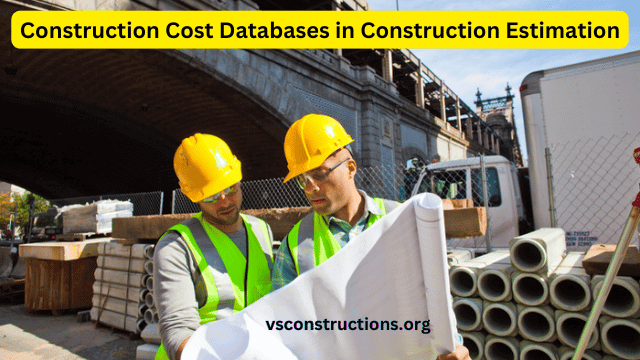By integrating construction cost databases into their workflows, construction professionals can significantly improve the accuracy, efficiency, and transparency of cost management, leading to better project outcomes. Construction estimation software plays a pivotal role in this integration, ensuring that professionals can quickly access reliable data and incorporate it into their cost estimations.
What Are Construction Cost Databases?
Construction cost databases are detailed repositories containing information on various aspects of construction project costs, including materials, labor, equipment, and other expenses. These databases serve as invaluable tools for contractors, estimators, architects, and engineers, helping them create precise cost estimates. Key features of these databases include:
- Material Costs: Prices for construction materials like concrete, steel, and plumbing fixtures.
- Labor Costs: Wage rates for different labor types, including skilled trades and general labor.
- Equipment Costs: Prices for renting or purchasing construction machinery.
- Regional Variations: Adjustments based on geographical location.
- Historical Data: Past cost trends to aid future projections.
- Regular Updates: Data that reflects current market conditions.
How Are Construction Cost Databases Used?
These databases are utilized at various stages of construction, such as:
- Estimating and Bidding: They help estimators generate accurate cost estimates and assist contractors in preparing competitive bids.
- Budgeting and Financial Planning: Project managers use them to create comprehensive budgets and forecast financial needs.
- Cost Control: Cost databases allow for tracking project expenses, identifying discrepancies, and implementing cost-saving measures.
- Resource Allocation: The databases provide insights into labor and material availability, aiding in efficient resource planning.
- Design and Feasibility: Architects and engineers use cost data to balance budget constraints with design choices.
Benefits of Construction Cost Databases
- Accurate Estimates: They provide up-to-date, reliable data for cost estimation.
- Time Efficiency: Quick access to comprehensive data streamlines the estimation process.
- Cost Control: They allow for effective tracking and management of project costs.
- Enhanced Collaboration: A centralized data source improves communication among stakeholders.
Ultimately, the integration of construction cost databases with construction estimation software enables construction professionals to make more accurate, efficient, and informed decisions, enhancing overall project management. This synergy leads to better budget management, risk assessment, and timely project delivery.
How Construction Cost Databases and Construction Estimation Software Work Together
The combination of construction cost databases and estimation software significantly enhances the project planning and cost estimation process. The two systems are often interconnected, allowing for seamless integration of data and more accurate calculations. Here’s how they complement each other:
- Data Integration: Estimation software often integrates with construction cost databases, allowing users to directly import up-to-date cost data into their estimates. This ensures that the estimates reflect current material, labor, and equipment costs, helping to avoid discrepancies that can arise from outdated information.
- Enhanced Accuracy: By using reliable data from cost databases, software can generate precise cost estimates, reducing the likelihood of errors and inaccuracies in the budgeting process. This integration helps professionals avoid costly mistakes and ensures that all aspects of a project are accounted for in the estimates.
- Efficiency: The use of estimation software with integrated cost databases streamlines the estimation process. The automation of data input from cost databases saves time and eliminates the need for manual data entry, thus speeding up the overall process.
- Real-time Updates: Cost databases frequently provide real-time price updates, which can be automatically reflected in the estimation software. This feature ensures that estimates stay relevant and accurate throughout the course of the project, allowing professionals to adjust quickly to market fluctuations.
- Scenario Analysis: Construction estimation software, when paired with cost databases, enables professionals to run scenario analyses. This allows them to explore different project scenarios and their cost implications, giving them a better understanding of how changes in materials or labor costs may impact the overall budget.
- Comprehensive Reporting: The integration of construction cost databases with estimation software allows for the creation of detailed and professional reports. These reports are essential for client presentations, project approvals, and financial tracking, offering stakeholders clear insights into the project’s financial health.
The combination of construction cost databases and construction estimating software provides an invaluable advantage for construction professionals. By integrating these tools into their workflows, professionals can achieve more accurate, efficient, and reliable cost estimations. This leads to better project planning, more informed decision-making, and enhanced collaboration between stakeholders. Ultimately, the use of these technologies helps to ensure that projects stay within budget, are completed on time, and meet the desired quality standards.
